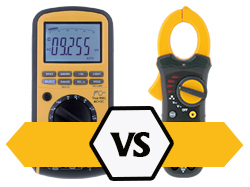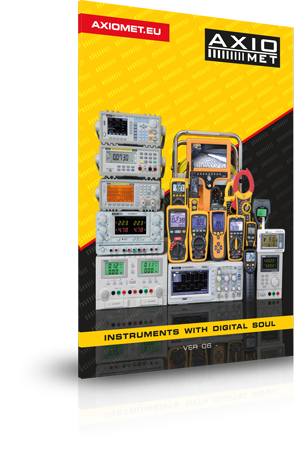A multimeter or a current clamp meter?

Usually, you don’t need both these devices, as the majority of their features are the same, whereas those that are not, are usually needed in completely different applications. The difference comes down to parameters, and most of all to the methods of conducting the measurements. Therefore, your choice will mainly depend on the predicted primary applications of your metering device. Digital multimeters and current clamps are used in a range of similar applications, but due to the detailed specifications, they may cope differently with particular tasks.
A good multimeter is a must-have device for any electronic engineer, while a current clamp will be more handy for an electrician.
Digital multimeters allow you to measure currents and voltages, both direct and alternating. They measure frequency, gain, attenuation, resistance, capacitance, temperature, and they enable you to test diodes and continuity. Top metering devices can display (True RMS) values for the monitored alternating signals, regardless of their waveforms. All those features are supported e.g. by the AXIOMET AX-178 model.
In case of high current intensity and readymade installations, where it is not desirable to disconnect the installation, it may be difficult to measure the passage of current with the use of a classic multimeter. Here, a current clamp may come to the assistance.
Current clamps work like current transformers, i.e. they use the current induced within a secondary circuit (inside the meter) by the current running through the measured conductor. Modern current clamps allow you to conduct measurements of not only alternating, but also direct currents. Furthermore, they enable you to conduct diode testing.
The basic feature of current clamps is contactless measurement. Simply clamp a conductor, and you can read the parameters of the signal. The only limitation is the size of the clamps, and subsequently the diameter of the conductor that you can to measure.
- Smaller current clamp meters enable measuring wires with a diameter from 20 to 30 mm; these are e.g. AXIOMET AX-200, AX-202, and AX-203 models.
- The large ones have clamps with the inside diameter of 54-55 mm (the AXIOMET AX-380, AX-M266C, and AX-3550 models). The AX-3550 model also allows conducting measurements for energetics purposes, such as active power (up to 750 kW), reactive power, apparent power, frequency (from 50 to 200 Hz), power factor, and phase angle.













